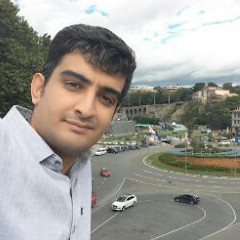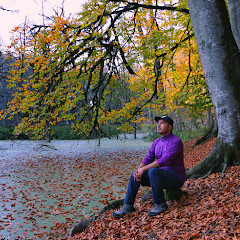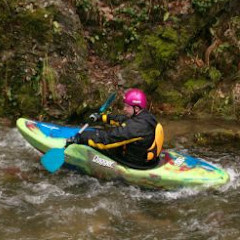Top Historical places in Hamedan, Iran
Top Rated Historical places in Hamedan
Top Reviewed Historical places in Hamedan

Ganjnameh Ancient Inscriptions

Tomb of Esther and Mordekhai

Cultural Heritage and Tourism Base of Hegmataneh

Ganjnameh Ancient Inscriptions
Reviews


Ganjnameh in Hamedan, Iran, is a historical site known for its ancient rock inscriptions and scenic beauty. The twin Sassanid-era cuneiform engravings, set against a backdrop of lush greenery and mountains, offer a captivating glimpse into Iran's rich heritage. Visitors can explore the archaeological significance while enjoying the picturesque surroundings. However, limited amenities and accessibility challenges may impact the overall visitor experience. An awe-inspiring site that combines history and natural beauty, Ganjnameh is a must-visit for history enthusiasts and nature lovers alike.




Among the historical monuments that show the ancient civilization and culture of Iran.🙏🙏🙏🙏🙏🙏








One of the places to see in Hamadan that gives you a special comfort.







I visited in August. It was crowded but very interesting. Open air markets with different kind of food, fruits, sweets. The place with Darius ' s inscription is well preserved and there are explanations in english. I love to visit this place and it was very interesting for me

An old holy place attributed to jews with an old impatient guide man who prevented women that r alone!!! The guide man tried to escape responding some questions. If u r tall you have to care, some doors are too short then u must bend to enter. There was no ticket to enter but the Oldman asked voluntary donation at the end.

A very holy and important place for the Jews of the world, this place is very old and very beautiful, at a short distance from this holy place of the Jews, there is a historical church called Gregory and a historical mosque called Jama Mosque. These places are a sign of the coexistence of religions in this historical city

I am from Hamedan,Iran. GANGNAMEH is one of the beautiful historical places in the city of Hamedan.
time of Darius the Great and Achaemenid Xerxes , which are engraved on the heart of one of the Alvand rocks , 5 km west of Hamedan , at the end of the Abbasabad valley. The inscriptions are each written in three 20-line columns in Ancient Persian , Elamite and New Babylonian . Ancient Persian text is located on the left side of both tablets and is 115 cm wide. The Elamite text is written in the middle of both inscriptions and the New Babylonian text is in the third column.
time of Darius the Great and Achaemenid Xerxes , which are engraved on the heart of one of the Alvand rocks , 5 km west of Hamedan , at the end of the Abbasabad valley. The inscriptions are each written in three 20-line columns in Ancient Persian , Elamite and New Babylonian . Ancient Persian text is located on the left side of both tablets and is 115 cm wide. The Elamite text is written in the middle of both inscriptions and the New Babylonian text is in the third column.

The tomb of Esther and Mordecai (Hebrew: קבר אסטר ומרדכי) is a Jewish tomb located in the center of Hamedan, at the beginning of Dr. Shariati Street. According to Iranian Jewish tradition, this tomb is the burial place of Esther and Mordecai. This tradition is not supported by Jews outside of Iran and it does not appear in any of the Babylonian or Jerusalem Talmuds. The first Jewish source about these tombs is Benyamin Tatili, who visited Hamadan in 1067 AD. According to him, 50,000 Jews lived in Hamadan where Esther and Mordecai were buried in front of a synagogue. Shahin, the first source of Iranian Jewish tradition, narrates the dreams of Esther and Mordecai and their journey to Hamadan, where first Mordecai and then Esther died an hour later in the synagogue. This tomb is registered as part of Iran's cultural heritage. The presence of this shrine has been an important factor in the formation and continuation of the presence of the Jewish community in Hamadan. The place known as "Esther's grave" is the grave of Queen Suzan, which is the Jewish neighborhood of Hamadan.

Ein wichtiger und besonderer Ort. Wir wurden sehr nett von dem Rabbi in Empfang genommen und uns wurde alles ausführlich gezeigt. Ein Besuch den wir nie vergessen werden.
P. S.: Wenn Sie diesem freundlichen Menschen eine Freude machen wollen, bringen Sie ihm einen schönen Kugelschreiber mit.
P. S.: Wenn Sie diesem freundlichen Menschen eine Freude machen wollen, bringen Sie ihm einen schönen Kugelschreiber mit.

I am from Hamedan,Iran. GANGNAMEH is one of the beautiful historical places in the city of Hamedan.
time of Darius the Great and Achaemenid Xerxes , which are engraved on the heart of one of the Alvand rocks , 5 km west of Hamedan , at the end of the Abbasabad valley. The inscriptions are each written in three 20-line columns in Ancient Persian , Elamite and New Babylonian . Ancient Persian text is located on the left side of both tablets and is 115 cm wide. The Elamite text is written in the middle of both inscriptions and the New Babylonian text is in the third column.
time of Darius the Great and Achaemenid Xerxes , which are engraved on the heart of one of the Alvand rocks , 5 km west of Hamedan , at the end of the Abbasabad valley. The inscriptions are each written in three 20-line columns in Ancient Persian , Elamite and New Babylonian . Ancient Persian text is located on the left side of both tablets and is 115 cm wide. The Elamite text is written in the middle of both inscriptions and the New Babylonian text is in the third column.











A must visit experience.
Very informative caretaker and guide in English, Farsi or French.
Very surreal to be in the presence of 2500 years of biblical history.
Very informative caretaker and guide in English, Farsi or French.
Very surreal to be in the presence of 2500 years of biblical history.











Great place to visit.
Will take between 1 and 2 hours.
The museum is mesmerising.
We loved the churches and did not expect to find any here.
Will take between 1 and 2 hours.
The museum is mesmerising.
We loved the churches and did not expect to find any here.





Amazing to think this was carved out about 2500 years ago.
Easy walk from the parking and very close to the Ganjnameh Waterfall.
Easy walk from the parking and very close to the Ganjnameh Waterfall.

Ancient Inscriptions are belong to Xerxes (Khashayar Shah)and Darius Shah from Hakhamaneshi dynasty (about 2500 years ago).
the translation of Inscriptions is on the other side of Inscriptions in two language of Persian and English. both of them has the same passages except the name of kings, in short the meaning of Inscriptions is:
I am Xerxes the son of Darius
a king from the kings
the king of a vast land with lots people
the god granted me this dignity
and so on...
the translation of Inscriptions is on the other side of Inscriptions in two language of Persian and English. both of them has the same passages except the name of kings, in short the meaning of Inscriptions is:
I am Xerxes the son of Darius
a king from the kings
the king of a vast land with lots people
the god granted me this dignity
and so on...

one time here was real city with lots of people from ancient dynasties. Hakhamanishian,Ashkanian and other , this place is very large the contains two old church(not amazing but good), a big site from old city remains that protected by roof an walls, a museum from skeletons, objects like coins,plates,globes,stone coffin ...



esther was queen of the Persian kings. The beautiful star, Queen and her cute uncle, Mordecai, is the highest man in the court.Jews gathered together as "Purem" and pray for fasting and chanting on March, Entrance to this monument is possible only by family. An old wooden door after some home appliance repair shops, inside the alley which is named after Zanganeh school of science, and the signing of the castle bath museum in this alley is our gateway to this ancient heritage.A few steps and then a large courtyard and later a brick dome building with a small, heavy and rocky derby.You have to bend so that you can enter this little door, an entrance hall that has been inflamed with old lanterns that surround it with a number of lanterns or modern times. Jews have illuminated the lights for their dead in this building. An umbilical cord is connected to this entrance hall. Hebrew words are engraved on it. arriving at two large tombstones of carved wood about a meter deep brown in the chamber. The tomb is older and is designed and built by a tombstone. The upper levels of these tombs are covered with several simple and inexpensive colored fabrics. The clergy have vowed these cloths to remove their clutches.The construction of Esther and Mordecai is very simple and old, its design has never been tampered with and has been restored only once.To the right of the room there are tombstones, two steps higher; there is also a chamber that is located in front of the old chairs.




Thanks to archeologists who have digged it out!



Ganjnameh (Persian: گنجنامه, romanized: Ganjnāme, lit. 'Treasure Book') is located 12 km southwest of Hamadan (ancient Ecbatana) in western Iran, at an altitude of c. 2000 meters across Mount Alvand.[1][2] The site is home to two trilingual Achaemenid cuneiform inscriptions The inscription on the upper left was created on the order of Achaemenid King Darius the Great (r. 522–486 BC) and the one on the right by King Xerxes the Great (r. 486–465 BC).
The two inscription panels of Ganjnameh, carved in stone in 20 lines on a granite rock above a creek, measure 2 × 3 m each. Written in Old Persian, Neo-Babylonian and Neo-Elamite, except for the different royal name, the contents of the two inscriptions are identical; Ahura Mazda receives praise, and lineages and conquests are listed. According to Stuart C. Brown, in the pre-Hellenistic period, this mountain was apparently the main "east-west pass" through Mount Alvand. During the Achaemenid period, Ecbatana functioned as summer capital due to its high elevation and pleasant weather.
The site received its name from local natives, who believed that the inscriptions contained the secret code to a hidden treasure. Two modern contemporary carved tablets have been placed in the site's parking lot with Persian explanation and its English translation
The two inscription panels of Ganjnameh, carved in stone in 20 lines on a granite rock above a creek, measure 2 × 3 m each. Written in Old Persian, Neo-Babylonian and Neo-Elamite, except for the different royal name, the contents of the two inscriptions are identical; Ahura Mazda receives praise, and lineages and conquests are listed. According to Stuart C. Brown, in the pre-Hellenistic period, this mountain was apparently the main "east-west pass" through Mount Alvand. During the Achaemenid period, Ecbatana functioned as summer capital due to its high elevation and pleasant weather.
The site received its name from local natives, who believed that the inscriptions contained the secret code to a hidden treasure. Two modern contemporary carved tablets have been placed in the site's parking lot with Persian explanation and its English translation


Ekbatan historic place related to about 3000 years ago as Median, Achaemenid and Partian habitate


✡️ : The Tomb of Esther and Mordechai is located in Hamedan province. Believed by some to house the remains of the biblical Queen Esther and her cousin Mordechai during Achaemenid Empire, it is the most important pilgrimage site for Jews in the country, who have lived peacefully and safely for 2800 years approximately!











The median people ancient capital was this place, under the excavation, excellent cultural heritage of the world. The median civilization was befor the persian civilization and the first persian civilization 7 tribe 6 median tribe was. The median civilization named magician people, like the medicine word is median origin.






Without detailed explanations, the excavations remain pretty poor. Unfortunately there are no maps or plans of the so far known historic city.
Highlight is the museum, that shows a very fine collection of Lorestan Bronces, ceramics, glass and coins. The Armainian churches we skipped.
Highlight is the museum, that shows a very fine collection of Lorestan Bronces, ceramics, glass and coins. The Armainian churches we skipped.


A great historical place. But unfortunately people who manage this place is a bit unfriendly. The door was closed when I went there. A woman opened the door for me. I was told by the manager that the place only hosts group visiters, and single males who travels alone are forbidden to enter the place (a very weird rule), but I managed to sneak into the place anyway after a group of German visitors went in. Five star for the place, but one star for the friendliness of the manager I encountered.
Entrance fee 25000rials
Entrance fee 25000rials



The site is built on the remains of the ancient city of Ecbatana, one of the oldest cities in Iran. There is a museum, an archaeological site and two churches in the site.


It was fantastic. don't forget to search for the translations on the internet. it is interesting.


One of the very first history lessons back in elementary school was about this historical and ancient city and I was pleased to finally visit it and learn about one of the beginning points of Persian and Iranian history and culture.